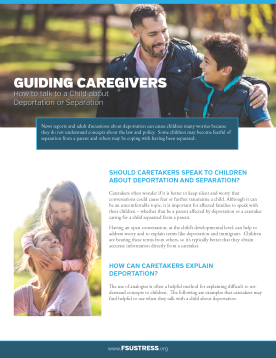
Comprender y Lidiar con las Reacciones en una Pandemia
Ofrece información para entender y enfrentar las reacciones durante una pandemia.
The following resources on child trauma were developed by the NCTSN. To find a specific topic or resource, enter keywords in the search box, or filter by resource type, trauma type, language, or audience.

Ofrece información para entender y enfrentar las reacciones durante una pandemia.

Helps parents and caregivers address their children's concerns and worries arising from the COVID-19 pandemic and the disruptions of normal life that we are experiencing.

Provides information on understanding and coping with reactions in a pandemic.
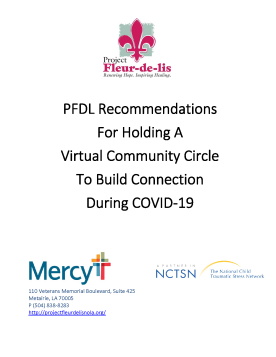
Offers ways to hold a virtual community circle. This fact sheet discusses virtual community circles and reasons to hold them, includes sample virtual circles, and describes how to facilitate a virtual community circle.
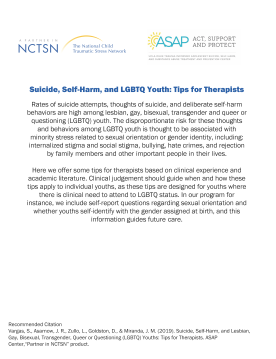
Offers tips to therapists who work with LGBTQ youth experiencing self-injury and suicidal ideation. The fact sheet describes challenges that LGBTQ youth face and helpful approaches therapists can take to support the youth they are working with.
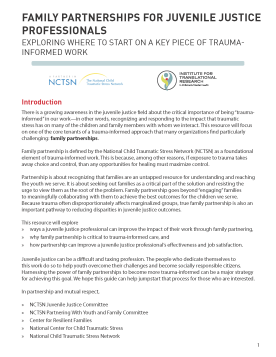
Explores ways a juvenile justice professional can improve the impact of their work through family partnering, why family partnership is critical to trauma-informed care, and how partnership can improve a juvenile justice professional’s effectiveness and job satisfaction.
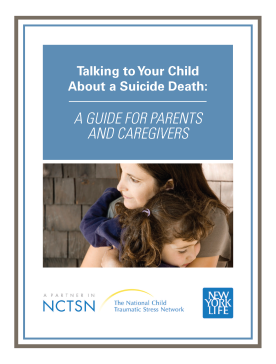
Provides information to parents and caregivers on how to talk to children about a suicide death.
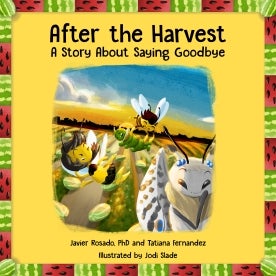
Tells the story of several illustrated characters who are coping with having to say goodbye when the family of a school-age boy, Gabriel, announces that they will need to move and relocate yet again in search for seasonal farm-work. The story highlights the unique stressors young children from mi
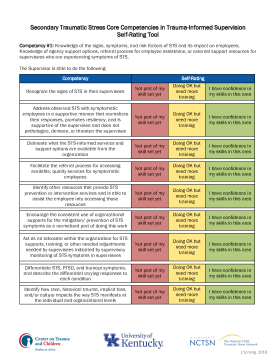
Is a self-rating tool that walks users through each of the competencies in Using the Secondary Traumatic Stress Core Competencies in Trauma-Informed Supervision.
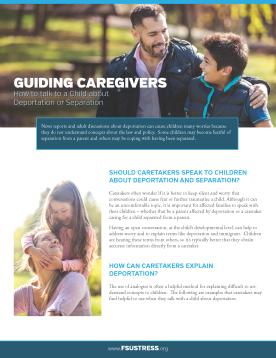
Offers guidance on how to talk with children about deportation or separation.
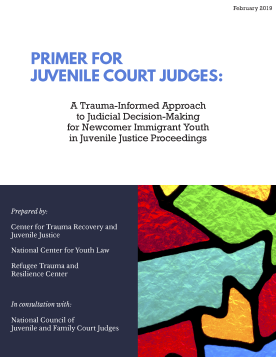
Introduces key factors that juvenile court judges should consider in order to take a trauma-informed approach when newcomer immigrant youth come before them in juvenile justice cases.
